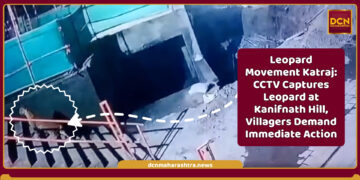Pune: The long-awaited flyover project at Gangadham Chowk—expected to ease the persistent traffic congestion in the Market Yard-Bibwewadi corridor—has hit a significant roadblock. Initially sanctioned by the Pune Municipal Corporation (PMC) three years ago, the project is now stalled due to a combination of design changes, ecological concerns, and land acquisition delays.
Originally approved on August 5, 2022, the PMC had planned to construct a flyover and a grade separator, along with a 24-meter-wide connecting road, to address the traffic snarls at this busy junction. However, objections raised by local political representatives led to the scrapping of the initial blueprint. A new plan has since been drawn up and submitted to COEP Technological University for technical evaluation.
The updated project, which is now estimated to cost ₹60 crore, will be carried out under a public-private partnership (PPP) model using a credit note system. But the road to construction has already become contentious, primarily due to environmental issues. One of the key concerns is the proposed felling of 85 trees, triggering protests from citizens and environmentalists alike.
In preparation for the flyover, PMC’s road department initiated road-widening work between Lullanagar and Bibwewadi. This involved narrowing pedestrian walkways, further fuelling opposition. Critics argue that such actions were taken without adequate consultation or compensation planning. The revised design notably omits the earlier proposed grade separator.
Key Features of the Revised Plan:
Flyover Length: 675 meters
Width: 16 meters
Route: Extending from Shah Complex in Bibwewadi to CRU Mall near Gangadham
Trees Slated for Removal: 85
PMC’s Mitigation Promise: Planting 1,400 trees prior to felling the existing ones
Meanwhile, land acquisition for the complementary 980-meter-long, 24-meter-wide road between Katraj-Kondhwa and Bibwewadi has remained incomplete for the past three years. This road was expected to serve as an alternative route to ease traffic pressure on Gangadham Chowk. Despite the proposed flyover, concerns persist about bottlenecks along a narrow, Army-owned road segment that lies just ahead.
Balasaheb Runwal, a resident, remarked, “Cutting down 85 trees without first planting replacements is simply wrong. This area has a dozen residential lanes—were we even consulted? And even after the flyover, traffic might remain due to that bottleneck ahead.”
Ameet Singh, an environmental activist, added, “Flyovers haven’t solved traffic on Sinhagad Road. Instead of building more, the PMC should focus on increasing the PMPML bus fleet. We strongly oppose any illegal tree cutting for this project.”
As the revised plan awaits COEP’s approval and environmental opposition escalates, the Gangadham flyover remains entangled in bureaucratic and ecological hurdles—leaving commuters with little relief in sight.
















